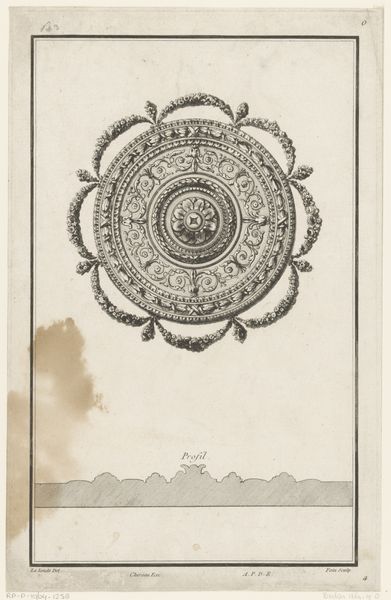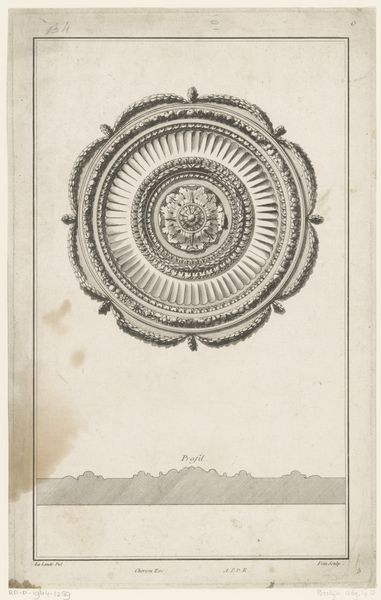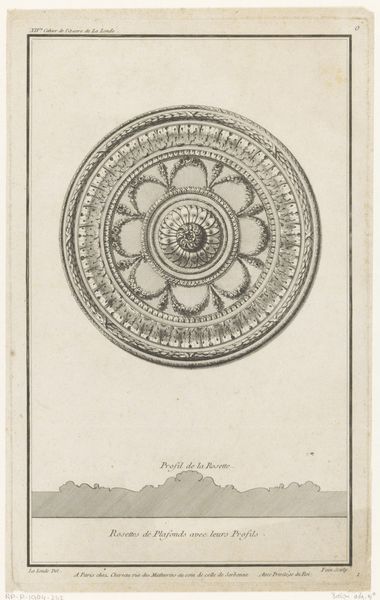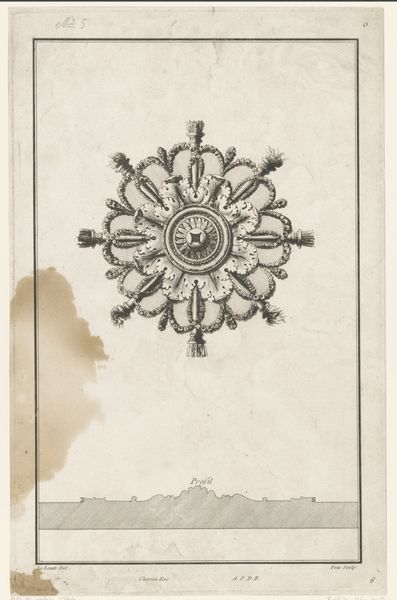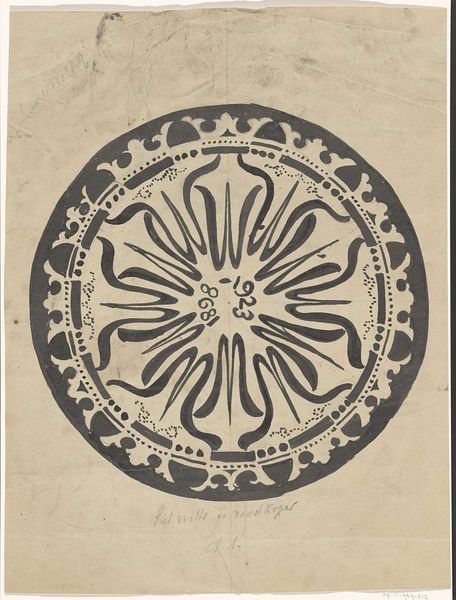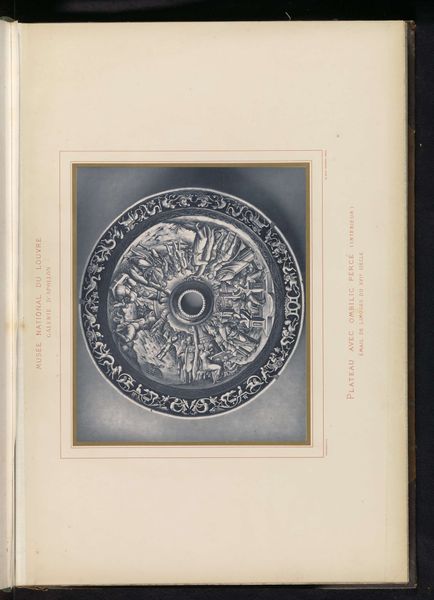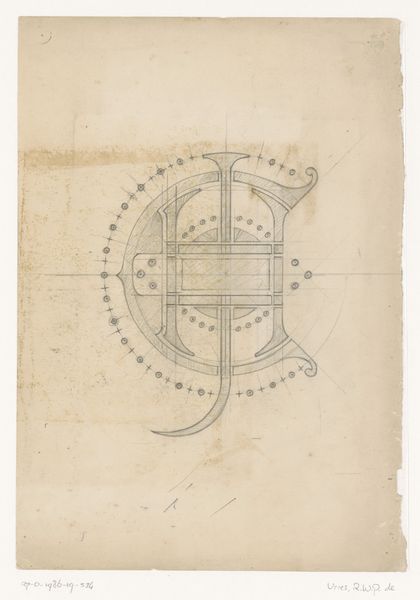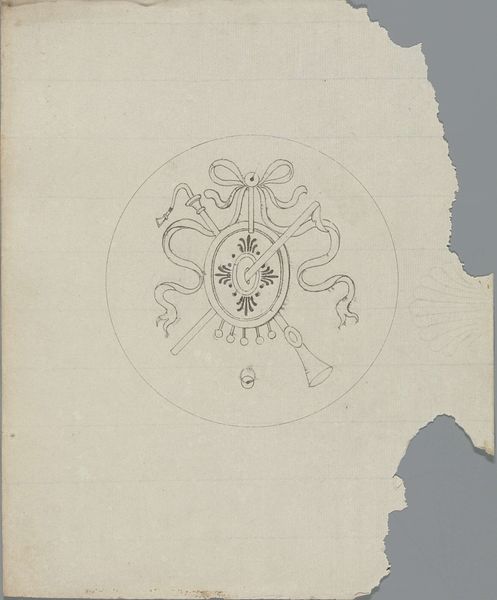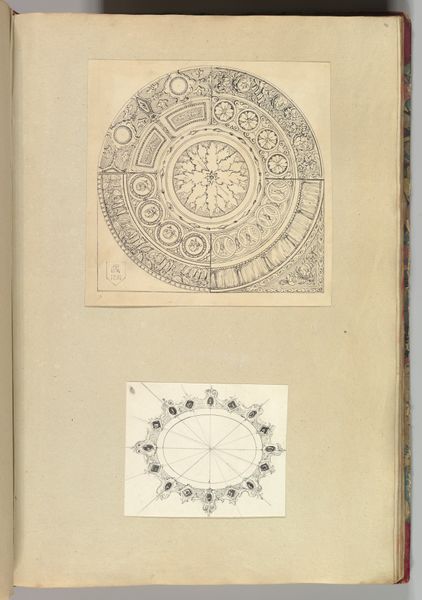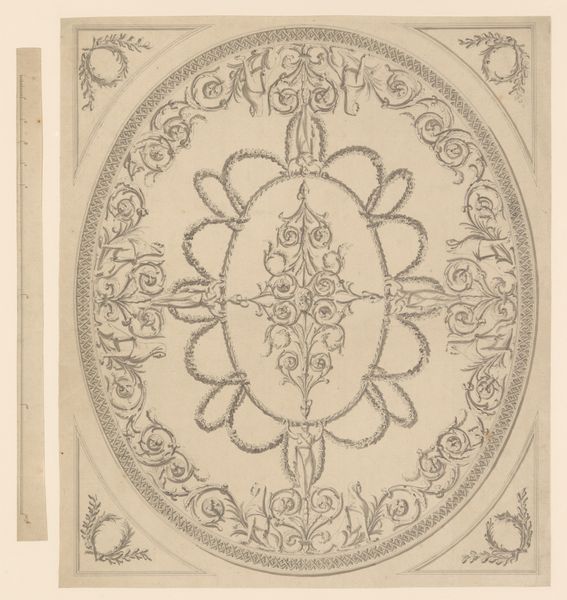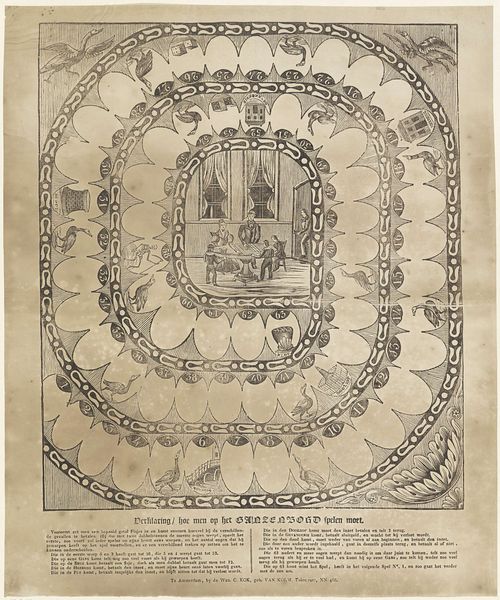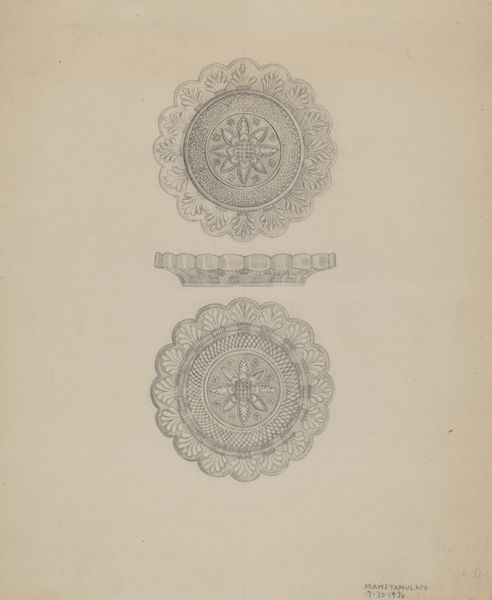
drawing, print, engraving
#
drawing
#
neoclacissism
#
aged paper
#
toned paper
# print
#
old engraving style
#
geometric
#
decorative-art
#
engraving
Dimensions: height 347 mm, width 219 mm
Copyright: Rijks Museum: Open Domain
Editor: Here we have "Rozet met ranken," a drawing and engraving by Augustin Foin from around 1784-1785. It depicts a rosette with scrolling foliage. The precision and symmetry give it a very formal feel. What do you see in this piece, beyond its decorative function? Curator: I see a potent visual symbol rooted in the socio-political climate of its time. Neoclassicism, of which this is an example, wasn't just about aesthetic preference; it was a deliberate embrace of order and reason, an appeal to the perceived stability of the ancient world in response to the turbulence of the late 18th century. Think about the French Revolution brewing during this period. Editor: So, the clean lines and geometric patterns are more than just decoration? Curator: Precisely. The rosette, a symbol of unity and perfection, combined with the controlled exuberance of the foliage, becomes a coded message. It speaks of a desire for a balanced social structure, perhaps even hinting at the containment – some might even say oppression – of more organic, revolutionary impulses. Do you see any of this order reflected in today's culture? Editor: That's fascinating. I hadn’t considered that. I guess I’m used to seeing order differently in our society than they did. What would you say the shift has been? Curator: I see less emphasis on enforced structures, and more effort on letting ideas circulate to cultivate progress in a dynamic process, even when disruptive, where solutions are fluid, but also must be considered with every change in variables. The rosette, then, is almost a cautionary emblem about attempts at over-regulation or inflexible power. Editor: I learned that viewing an object through many lenses opens up a broader range of considerations. Thanks! Curator: Absolutely! That’s what makes art history so vital – it is intertwined with sociology and philosophical inquiries that affect the culture and development of all.
Comments
No comments
Be the first to comment and join the conversation on the ultimate creative platform.
